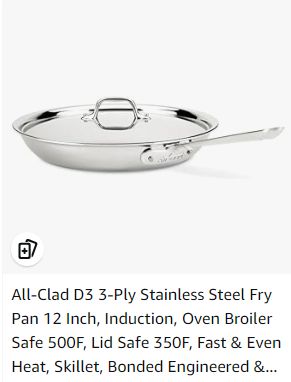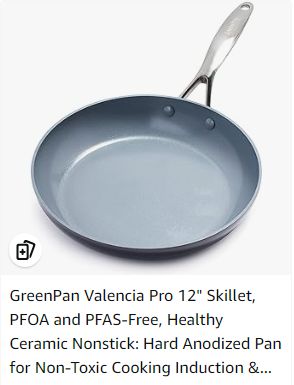Alternatives to Cast Iron
Cooking in other than cast iron? Blasphemy, you say? As versatile and durable as cast iron is, there are characteristics of other types of cookware that can make them superior, if only in a narrow or specific way.
It helps to think of cookware as a tool, and that for every scenario, there is a "right tool for the right job". Sometimes you need a hammer and other times you need a screwdriver, and neither will do the other's job very well at all. Here are the most widely used alternatives, and what they bring to the toolbox.
Stainless Steel
The Good: Stainless steel pans and, in particular, multi-ply pans have an advantage over cast iron in their capacity to heat evenly across the pan and react relatively quickly to temperature changes of the heat source.
With a core of aluminum sandwiched between inner and outer layers of stainless, heat is conducted from center to edge, and up the sidewalls on better pieces. Premium stainless ware may have up to five layers in total. Moderately-priced versions will have multi-ply bottoms only. Lower end will only have a disc of stainless encapsulating an aluminum core bonded to the bottom of the pan.
The Bad: Not really non-stick at all; cooking technique must be adjusted to compensate. A real pain to keep looking clean and new. They're costly compared to most other types, especially for those of superior design.
Main Takeaways: Better evenness of heat and responsiveness to changes in temperature than cast iron. Upscale appearance. With heat resistant handles, most are oven safe.
A good choice if you want to try it:

Carbon Steel
The Good: Carbon steel is the closest of all the types to cast iron. It requires seasoning just like cast iron to maintain its non-stick property. Being pressed from sheet steel stock, with handles welded on, they are far lighter than cast iron and have found favor in commercial kitchens for their tolerance of hard use (and abuse). More responsive to temperature changes than cast iron.
The Bad: Not the prettiest pans, even when new. They're made to work, not to show off. They can warp more easily than other types.
Main Takeaways: Utilitarian workhorse like cast iron but without the cumbersome weight.
A good choice if you want to try it:

Non-Stick Coating
The Good: Specifically, via a coating of PTFE b/k/a Teflon, non-stick pans are ready for service right out of the box, and require little in the way of care other than 1) not using metal utensils and 2) not heating past the point where the coating begins off-gassing, which can be deadly, most often to pet birds.
The Bad: Short life span. Deteriorating coating may slough off into food. The dead parakeets.
Main Takeaways: Go-to pan if effortless non-stick frying and easy clean up is your desire.
A good choice if you want to try it:

Ceramic Non-Stick Coating
The Good: A different take on non-stick that is relatively more durable than Teflon, and without the dangers of off-gassing.
The Bad: Again, no metal utensils. Very high heat may crack ceramic coating.
Main Takeaways: Same as with Teflon.
A good choice if you want to try it:

Hard Anodized Aluminum
The Good: A durable finish that will never rust, the process to create it transforms the pan's surface into a hard, non-reactive oxide of aluminum. The coating is somewhat non-stick, with the trade-off being it is more durable than PTFE or ceramic. Being aluminum it heats evenly and is responsive to changes in temperature.
The Bad: Finish can still be scratched. Concerns by some about cooking in aluminum.
Main Takeaways: Not the best for frying or applications where you expect the food will likely stick. Stick with boiling, melting, stews and sauces. Clean up with abrasives to be avoided.
No recommendation.








